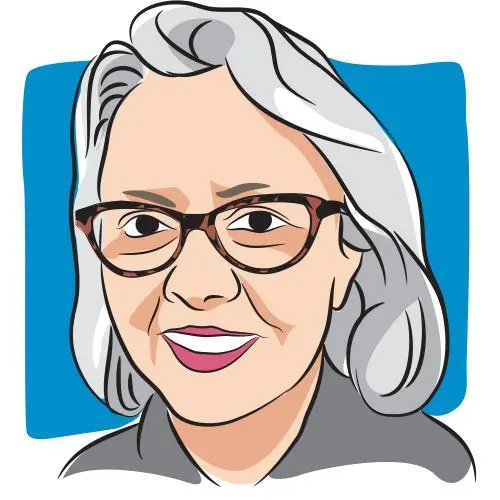Publication
Article
CURE
Treatment Updates
Author(s):
Updates from the American Society of Hematology meeting and the San Antonio Breast Cancer Symposium.
The annual meetings of the American Society of Hematology and the San Antonio Breast Cancer Symposium were held in December. Each gathering brought together thousands of cancer researchers, physicians, and others to report on critical issues in cancer treatment, prevention, supportive care, and more.
New Treatment Strategy Benefits Older Myeloma Patients
The key findings from a phase 3 Spanish study are three-fold: less aggressive initial (induction) therapy with once-weekly—rather than twice-weekly—Velcade (bortezomib) was effective; melphalan outdid thalidomide as a partner to Velcade; and following induction with maintenance therapy may be the best approach for treating multiple myeloma patients over 65 who haven’t received previous treatment.
In the two-part study, 260 patients were randomized to receive either Velcade, melphalan, and prednisone (VMP) or Velcade, thalidomide, and prednisone (VTP). Both combinations yielded a similarly high overall response rate (the percentage of patients whose cancer shrinks or disappears after treatment), reaching 80 percent for VMP and 81 percent for VTP. However, a clear difference emerged when looking at side effects: Nine percent of patients in the VTP arm experienced severe peripheral neuropathy, compared with 5 percent of patients on VMP, and VTP was more toxic to the heart, with 8.5 percent of patients developing cardiac toxicity, compared with none in the VMP group. The VMP group, however, had more cases of infection and severely low white blood cell and platelet counts.
After VMP or VTP induction, patients received maintenance therapy with Velcade plus either thalidomide (VT) or prednisone (VP) for up to three years. Despite no significant difference between the two regimens in terms of safety or response, the addition of maintenance therapy increased the complete response rate from 23 percent after induction treatment to 42 percent after maintenance therapy, and VMP followed by VT was the winner overall. —Melissa Weber
Treanda A Better Match for Rituxan in Two Types of Lymphoma
Treanda (bendamustine) may be an effective substitute for CHOP as the chemotherapy partner to Rituxan (rituximab) for patients receiving initial therapy for advanced follicular or mantle cell lymphomas.
A phase 3 German study compared the effectiveness and safety of Rituxan plus Treanda to Rituxan plus CHOP (R-CHOP), a chemotherapy “cocktail” that includes cyclophosphamide, doxorubicin, vincristine, and prednisone. The Rituxan plus Treanda study arm included 260 patients; the R-CHOP arm had 253 patients.
Rituxan plus Treanda outperformed the traditional R-CHOP regimen at almost every turn. Median progression-free survival (the length of time the cancer did not progress) hit 54.9 months in the Treanda arm, compared with 34.8 months in the R-CHOP group, and 39.6 percent of patients receiving the Treanda combo had a complete remission (disappearance of all signs of cancer) versus 30 percent of those on R-CHOP. Plus, the R-CHOP arm resulted in a higher frequency of severe side effects, namely neutropenia and leukocytopenia. —MW
Rituxan Tops Campath in Chronic Lymphocytic Leukemia
Combining Fludara (fludarabine), Cytoxan (cyclophosphamide), and Rituxan (rituximab) was safer and produced a higher response than pairing Campath (alemtuzumab) with Fludara and Cytoxan in patients under age 65 with advanced B-cell chronic lymphocytic leukemia receiving their first treatment.
An early analysis of this phase 3 study showed 74 percent of patients in the Rituxan arm had their cancer completely disappear, called a complete response, compared with 58 percent in the Campath arm. Evaluation of progression-free survival and overall survival are still to come.
For the 165 patients evaluated for side effects, more toxic effects were observed in patients on Campath compared with Rituxan. The most common side effect was severe neutropenia, affecting 10 patients in the Rituxan arm and 29 patients in the Campath arm. The trial was stopped early because of the high toxicity seen in the Campath arm. —MW
Side Effects Manageable for Newly Approved Folotyn
Vitamin supplementation can reduce certain side effects of Folotyn (pralatrexate), and the majority of patients are able to tolerate the full dose, concluded two safety studies in relapsed or refractory peripheral T-cell lymphoma.
One study specifically looked at mucosal inflammation and thrombocytopenia (low platelet counts), two of the most common side effects of the antimetabolite drug Folotyn, and found that it’s appropriate to give patients folic acid and vitamin B12 to minimize these toxic effects.
The second study concluded that two-thirds of patients were able to tolerate the full dose without cumulative side effects. Plus, for patients unable to receive the full dose, reducing their dose by one-third allowed them to continue with therapy.
The Food and Drug Administration approved Folotyn in September, making it the first drug approved in the U.S. for peripheral T-cell lymphoma. —MW
Finding the Right Hormonal Therapy Combination
Many women develop breast tumors that are sensitive to estrogen—a female hormone that can feed a tumor’s growth and development. So for the past 15 years, researchers have experimented with hormonal drugs to figure out which drugs work best, how they should be sequenced, and how long they should be taken.
In San Antonio this year, scientists reported whether the women who initially started on the aromatase inhibitor Aromasin (exemestane) did better than the women who switched later from tamoxifen. “There is no difference whatsoever,” said researcher Daniel Rea, MD, of the University of Birmingham, either in the likelihood of cancer recurring or in survival.
Another study examined whether being premenopausal at diagnosis made a difference in outcomes (all women were menopausal during the study, either naturally, because of surgical removal of the ovaries, or because of chemotherapy treatment). Premenopausal women who took tamoxifen for five years, followed by another aromatase inhibitor called Femara (letrozole), were less likely to have a recurrence than women who took only tamoxifen. —Laura Beil
Herceptin More Effective If Given With Chemotherapy
Taking Herceptin (trastuzumab) with, as opposed to after, chemotherapy helped more women live longer without a recurrence, new research found.
Investigators randomly assigned roughly 3,000 patients with stage 1 to 3 HER2-positive breast cancer, who had already undergone surgery, to receive either chemotherapy alone (doxorubicin and cyclophosphamide followed by paclitaxel), chemotherapy followed by Herceptin, or chemotherapy given with Herceptin (paired with paclitaxel).
Herceptin after chemotherapy outperformed chemotherapy alone, but simultaneous use proved superior to both. For the 954 women who received Herceptin after chemotherapy, 79.8 percent were alive and free of recurrence after five years. In the 949 women given Herceptin at the same time as chemotherapy, 84.2 percent were recurrence-free at five years, a difference that is statistically significant. Only about 3 percent of patients in each Herceptin arm experienced heart toxicity.
Since the FDA-approved use of Herceptin allows for either approach, these data suggest Herceptin should be given at the same time as chemotherapy, said lead investigator Edith Perez, MD, of the Mayo Clinic in Florida, at a press briefing. —Melissa Weber
Adding Avastin May Slow Disease Progression
In February 2008, Avastin (bevacizumab) received approval for metastatic breast cancer, despite the fact that an advisory panel for the Food and Drug Administration said the drug did not offer enough benefit (specifically in survival) to justify its use. Hoping to more clearly define the potential and limits of the drug, researchers have continued testing Avastin in breast cancer, including as second-line therapy.
New data from the RIBBON-2 trial involved 684 women with HER2-negative metastatic breast cancer who had already received one course of chemotherapy. The women received another session of chemotherapy with or without Avastin.
The results: Adding Avastin to chemotherapy as a second-line treatment increased progression-free survival—the length of time the disease did not worsen—by around two months (from 5.1 months to 7.2 months). The RIBBON-2 study has not found an improvement in overall survival with the addition of Avastin, but 43 percent of women in the study are still alive. An updated analysis is expected next year. —LB
Denosumab Outperforms Zometa in Treating Bone Metastases
Advanced breast cancer patients taking denosumab not only had fewer bone complications, but the complications also took longer to develop compared with Zometa (zoledronic acid).
For the 2,046 patients given either denosumab or Zometa, denosumab reduced the risk of developing a single skeletal-related event (fracture, need for radiation, surgery to the bone, or spinal cord compression) by 18 percent compared with Zometa. For patients who developed multiple skeletal-related events, denosumab reduced the risk by 23 percent. In total, there were 474 skeletal-related events in 30.7 percent of patients in the denosumab group versus 608 events in 36.5 percent of patients on Zometa. Plus, denosumab better controlled bone pain, with a median of 88 days until patients experienced moderate or severe pain, compared with 64 days with Zometa.
A small percentage of patients in both arms experienced jawbone damage, known as osteonecrosis of the jaw (2 percent with denosumab and 1.4 percent with Zometa), and kidney problems (4.9 percent and 8.5 percent, respectively).
Amgen, the maker of denosumab, plans to file the drug for approval in the first quarter of next year for the treatment of bone metastases, said Lisa Rooney, a spokesperson for the company. —MW
Find more news at sabcs2009.curetoday.com.

















